Dogs have long held the title of “man’s best friend,” known for their loyalty, companionship, and affection. However, beneath their friendly demeanor lies the potential for aggressive behavior, particularly if not trained, socialized, or cared for appropriately. While any dog can become aggressive under the wrong circumstances, certain breeds have historically been involved more frequently in severe incidents, including attacks leading to serious injury or even death.
According to NIH, in the United States alone, the Centers for Disease Control and Prevention (CDC) reports approximately 4.5 million dog bites each year, emphasizing the importance of understanding which breeds might pose a higher risk. Although identifying breeds associated with dangerous behavior can be sensitive and controversial, it remains crucial to highlight these patterns to promote responsible dog ownership and preventive measures.
This article delves into the breeds that have been statistically linked to higher incidences of severe aggression toward humans. It is important to note, however, that a dog’s behavior significantly depends on the owner’s commitment to proper training, socialization, and attentive care, underscoring that responsible ownership plays a vital role in mitigating risks associated with these breeds.
Most Dangerous Dog Breeds
1. American Pit Bull Terrier
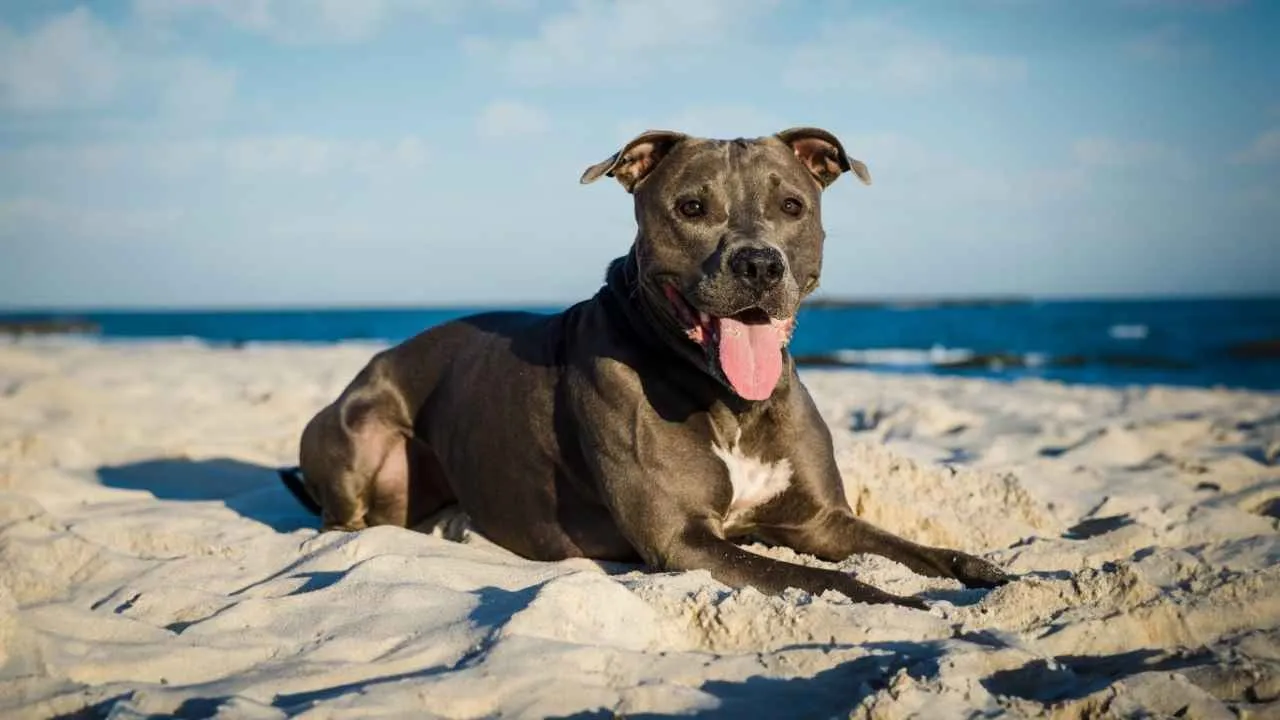
Renowned for their muscular build and strength, American Pit Bull Terriers possess powerful jaws. This breed has a bite force ranging from 235 to 260 pounds per square inch. This impressive bite force significantly contributes to the severity of injuries in fatal attacks, making this breed notably dangerous when aggression arises.
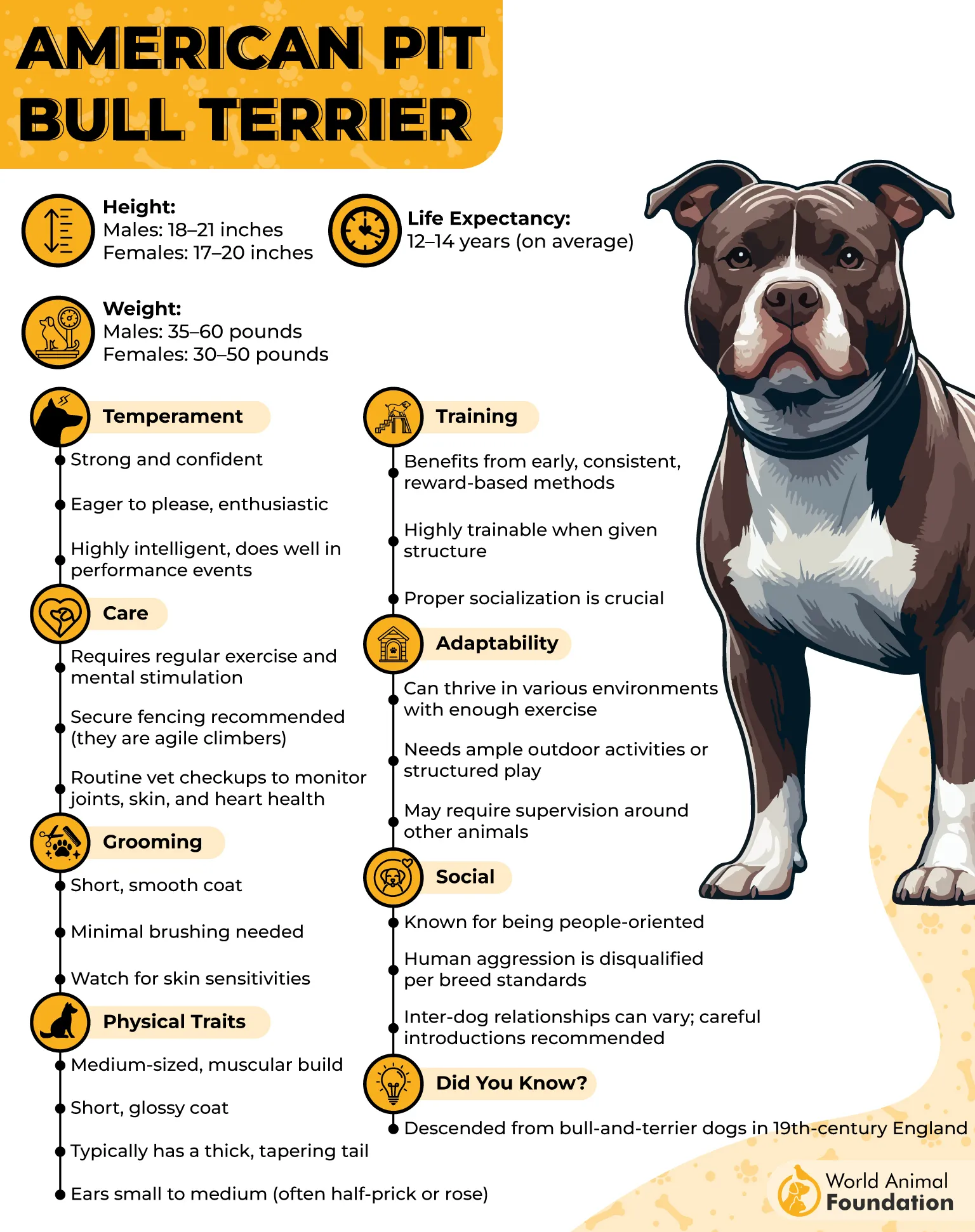
Not for the Novice
While many pit bulls are affectionate and fiercely loyal companions, they are typically unsuitable for inexperienced dog owners or families with young children. They are among the most aggressive dog breeds.
Without meticulous socialization and assertive training, these dogs can become unpredictably aggressive, posing severe risks to those unable to manage their potent physical capabilities effectively.
Unfortunate Historical Roots
WebMD notes that the troubling reputation of this dangerous dog breed largely stems from their disturbing history in illegal dog fighting, bred explicitly for aggression and endurance in combative scenarios. This legacy has resulted in their involvement in over 60% of fatal dog attacks in the United States, an alarming statistic reflecting both their physical potential and historical misuse.
Fun Fact: Despite their intimidating reputation, this aggressive breed was once affectionately known as “nanny dogs” for their reputed gentleness with children in the early 20th century.
2. Rottweiler
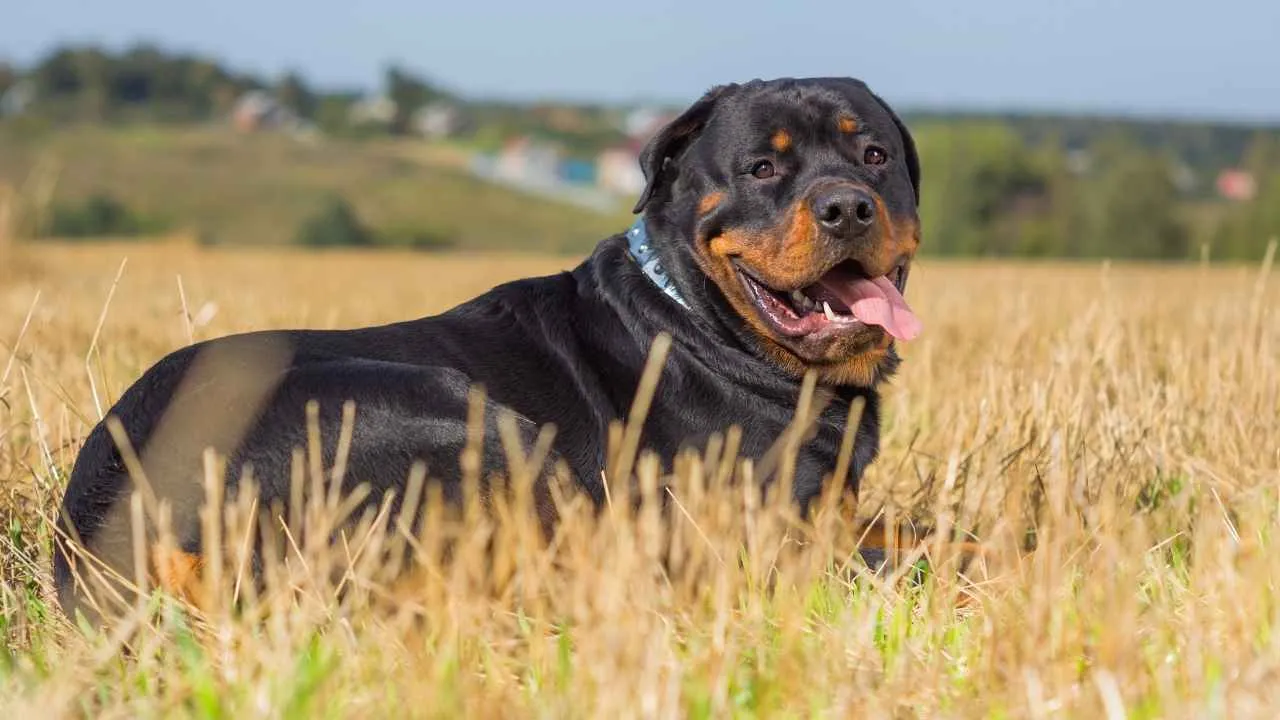
Rottweilers are formidable dogs, famous for their incredible bite force, measuring around 328 pounds per square inch, enough to break human bones. Their strength, paired with impressive speed, makes them challenging to restrain once they perceive a threat.
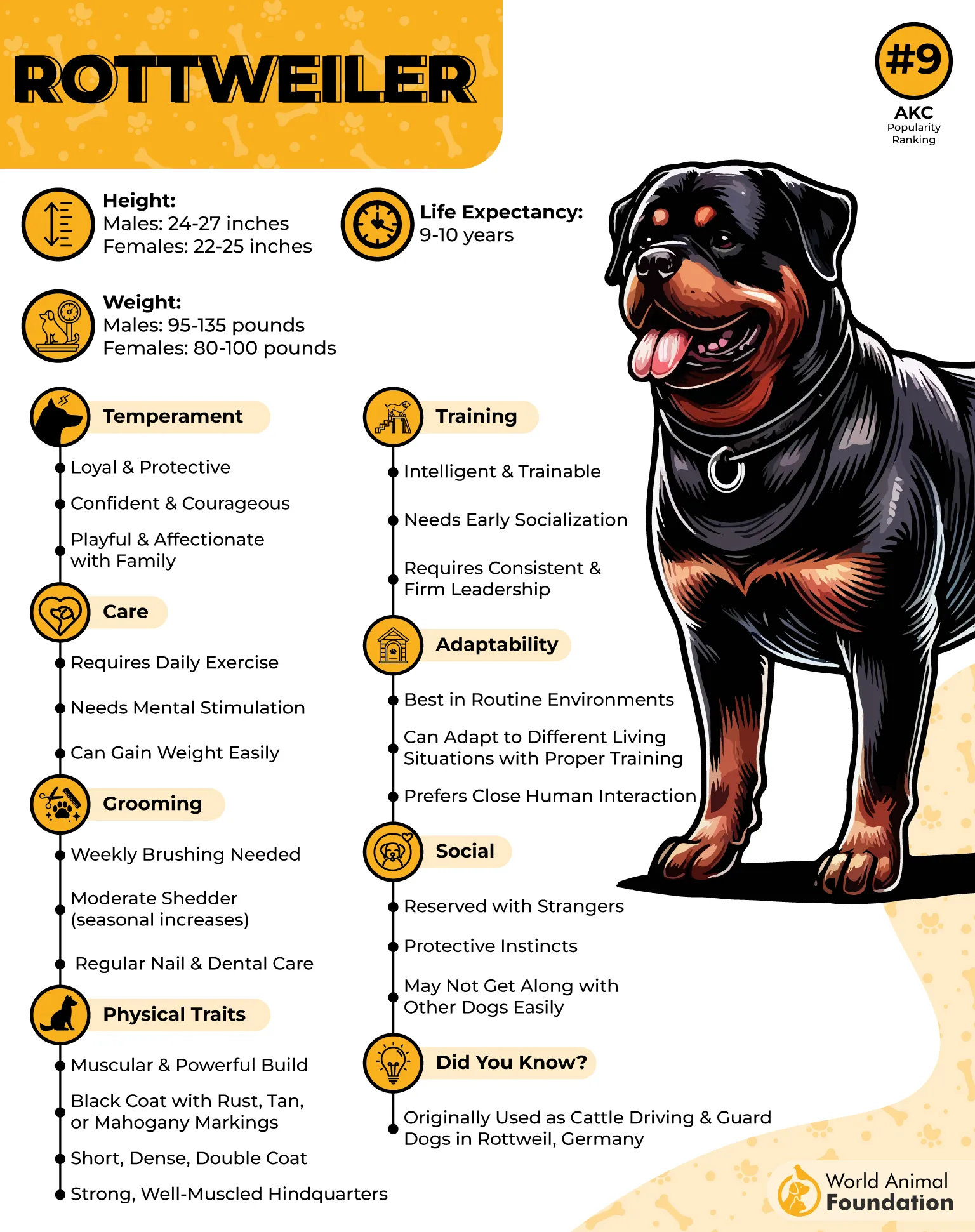
Protective, Yet Potentially Hazardous
Deeply loyal and protective of their families, Rottweilers are notorious for their wary nature toward visitors or strangers, often interpreting innocent gestures as threats. This heightened protective instinct contributed significantly to the breed’s involvement in 45 fatalities from 2005 to 2017, underscoring the necessity for responsible ownership and thorough training.
Demands of Ownership
Owning these family dogs requires substantial commitment. PetPlan states that these dogs thrive under calm, confident leadership, necessitating abundant space for physical activity and continuous mental stimulation. Adequate affection and consistent training from an early age are essential to curb aggressive tendencies and establish healthy behaviors.
Fun Fact: Despite their intimidating reputation, Rottweilers are often endearingly described as charming, “dopey” companions, frequently displaying surprisingly gentle, playful attitudes with their family members.
3. American Bulldog
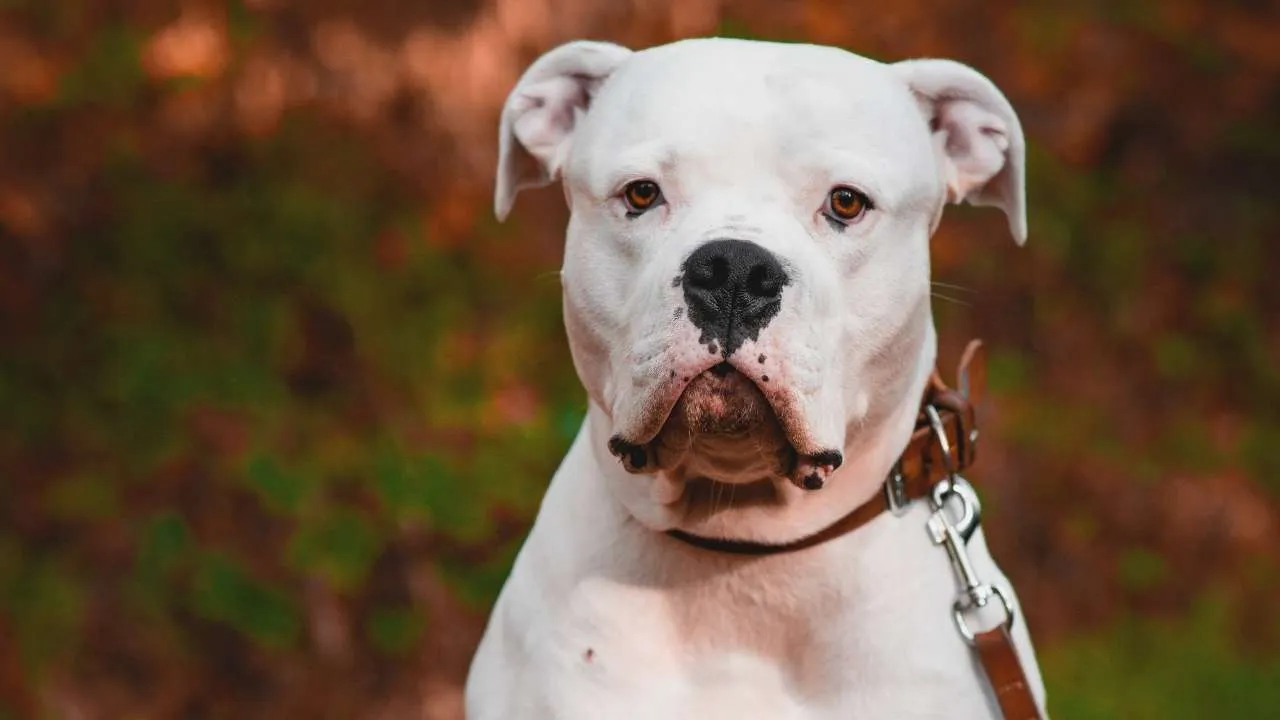
Unlike their docile British counterparts, American Bulldogs are robust and muscular working dogs, often weighing around 100 pounds. Their powerful build allows them to sprint at remarkable speeds, capable of knocking an adult to the ground effortlessly.
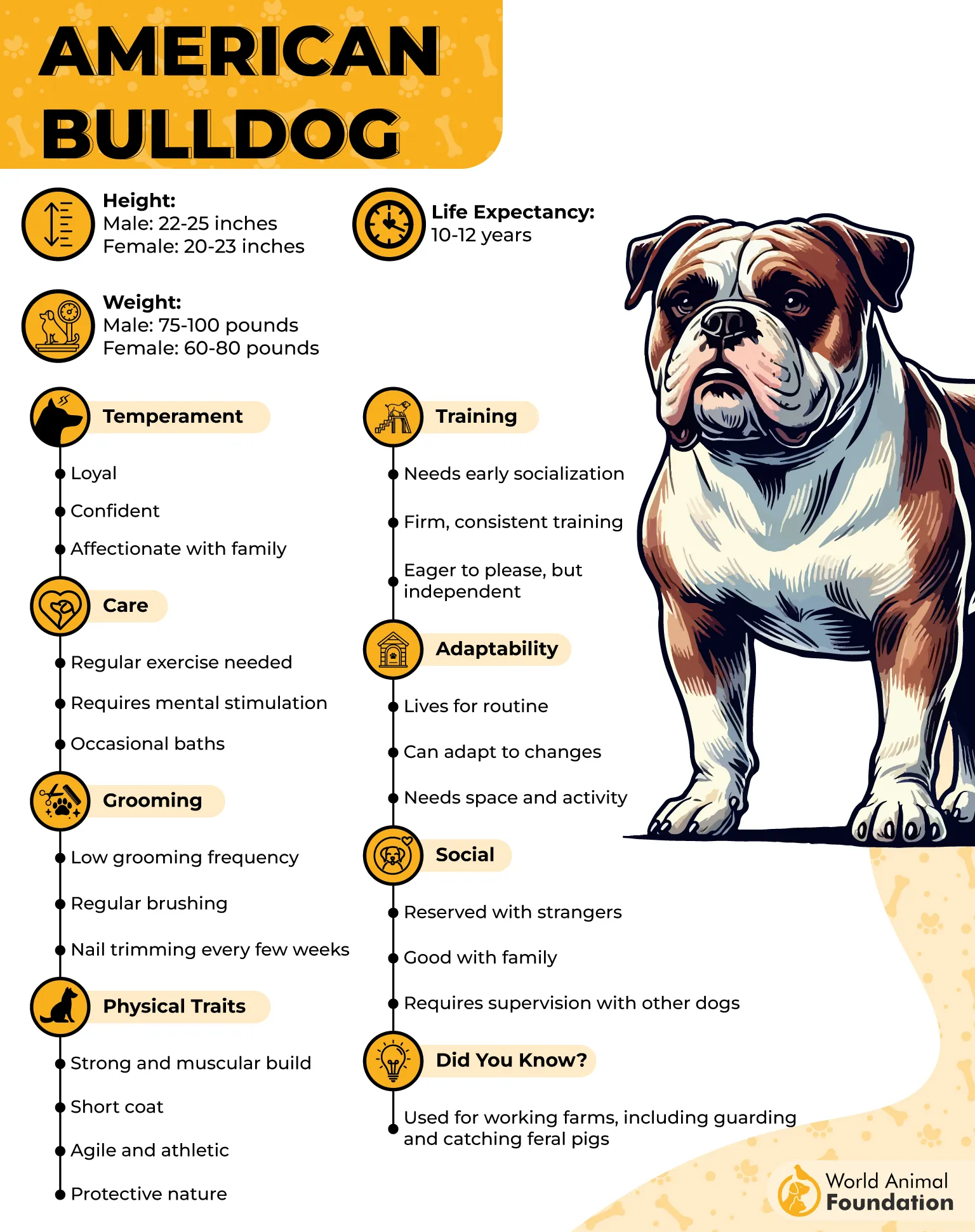
Strong Prey Drive
This breed’s instinctive prey drive surpasses many other breeds, making them particularly aggressive towards smaller animals if not properly socialized early on. Owners should vigilantly monitor interactions with diminutive pets such as cats, ensuring that aggressive tendencies are appropriately managed to prevent tragic incidents.
Exceptional Bite Force
Possessing a formidable jaw capable of delivering a bite force of approximately 305 pounds per square inch, American Bulldogs have been responsible for around 3.5% of fatal dog bites. Although primarily aggressive towards other canines, their potent bite remains a significant danger to humans, highlighting the need for comprehensive training and responsible ownership.
Fun Fact: Despite their fierce reputation, American Bulldogs often exhibit affectionate, playful personalities, making them beloved pets among owners who appreciate their energetic and protective nature.
4. Siberian Husky
Admired widely for their mesmerizing eyes and wolf-like appearance, Siberian Huskies mask impressive strength beneath their captivating exterior. Despite typically weighing less than 60 pounds, their bite force reaches up to 320 pounds per square inch, making them surprisingly potent.
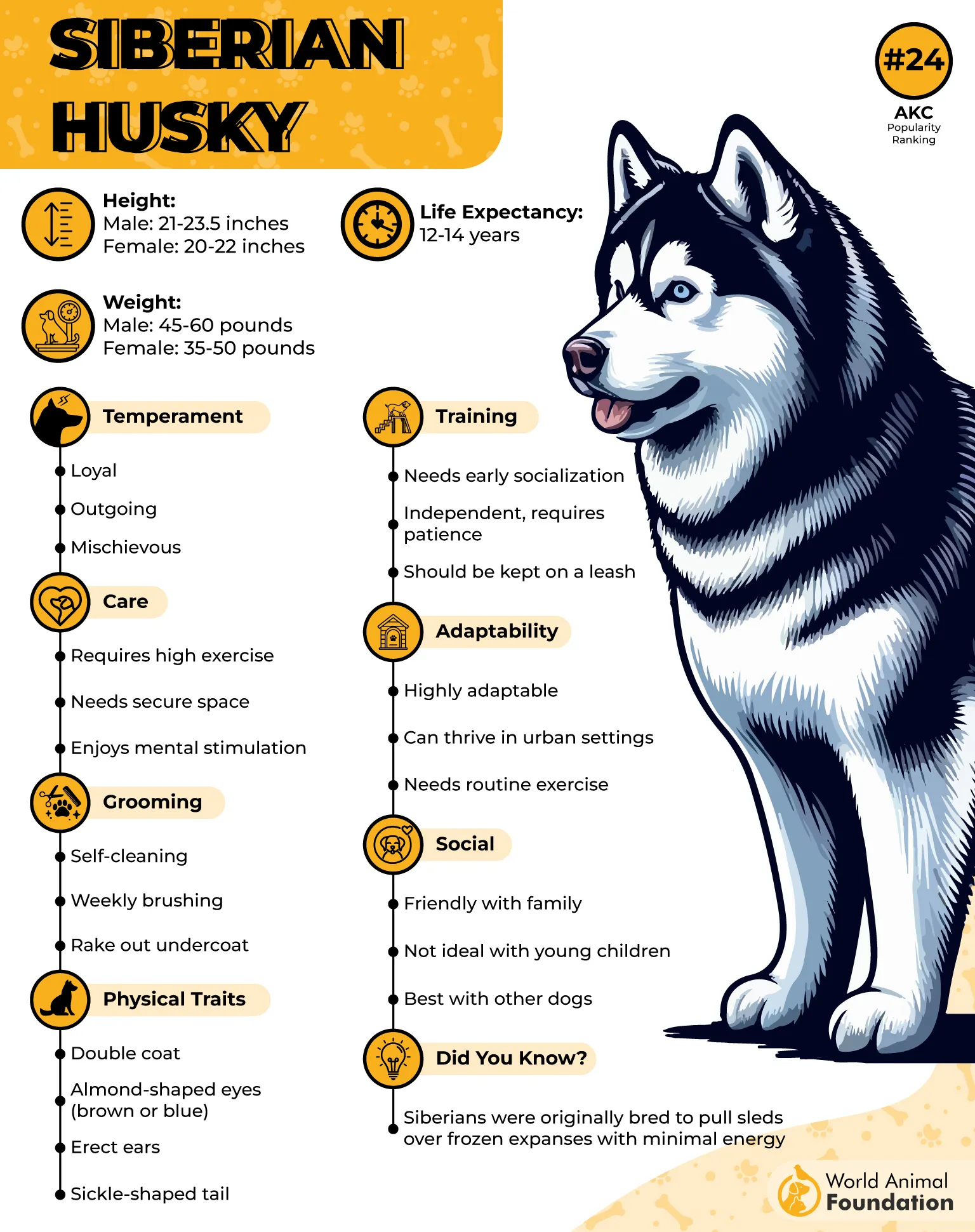
Vocal and Independent
Huskies are notably vocal and animated animals known for their expressive nature. However, their inherent stubbornness and independence can occasionally result in aggression, particularly when improperly trained or insufficiently exercised, accounting for their involvement in 13 fatal incidents during a recent 12-year study.
A Breed for Experienced Owners
While generally compatible with families and children, Siberian Huskies require substantial physical exercise, consistent training, and a calm, structured environment. Their high energy levels and strong-willed temperament make them challenging for first-time dog owners, who might find less demanding breeds more suitable.
Fun Fact: Siberian Huskies famously thrive in cold climates, originally bred by the Chukchi people of Siberia to pull sleds over long distances in harsh weather conditions, showcasing their impressive endurance and adaptability.
5. Alaskan Malamute
Alaskan Malamutes resemble their Husky cousins but are significantly larger, often reaching up to 90 pounds. Sporting a thick double coat adapted for freezing climates, these powerful dogs pack a startling, fatal bite force of about 400 pounds per square inch, underscoring their immense physical strength.
Spirited and Stubborn
Known for their playful yet challenging temperament, Malamutes possess a notable stubborn streak that frequently complicates training efforts. This independent mindset, paired with high energy levels, demands rigorous and patient training from experienced handlers to manage their assertive behaviors effectively.
Challenges with Other Animals
Although typically friendly toward humans, Alaskan Malamutes can exhibit sharp aggression toward other animals. Their strong prey drive and energetic nature require owners to carefully supervise interactions with smaller pets and consistently engage in socialization practices to mitigate potential conflicts.
Fun Fact: Originally bred for hauling heavy freight in harsh Arctic conditions, Alaskan Malamutes are among the oldest sled dog breeds, demonstrating impressive endurance and adaptability in extreme environments.
6. Presa Canario
Their loyalty and confidence also contribute to their lack of tolerance toward other dogs. Originating from Spain’s Canary Islands, the Presa Canario was specifically bred as a formidable guardian and cattle-driving dog. Their powerful build, typically ranging from 84 to 110 pounds, paired with a height between 22 to 26 inches, equips them perfectly for protective duties.
Intimidating Presence
The Presa Canario’s robust frame and muscular physique can be intimidating, reflecting their intended role as protectors. Although generally loyal to their owners, their protective instincts can quickly escalate to aggression toward perceived threats, requiring vigilant and responsible ownership.
Essential Health Screening
Responsible breeding practices are crucial for this breed. Health screenings for conditions such as hip dysplasia, elbow dysplasia, thrombopathia, hypothyroidism, and various inherited diseases like von Willebrand’s are essential. Regular ear inspections and dental care also ensure overall well-being, reducing potential behavioral issues related to discomfort.
Fun Fact: Despite their imposing stature, Presa Canarios have a surprisingly affectionate side with their owners, often forming strong, enduring bonds within their families.
7. Akita
Renowned for their loyalty, Akitas are simultaneously infamous for territorial aggression and independence. According to a comprehensive 32-year study by Animals 24-7, Akitas ranked third for unprovoked biting incidents, which has led several states to enact restrictive ownership laws due to their aggressive tendencies.
Strong-Willed Hunter
Originating from Japan, these hunting dogs were bred to hunt large game and act as vigilant guardians, traits contributing significantly to their powerful prey drive. Weighing between 70 and 130 pounds and standing 24 to 28 inches tall, these dogs possess a formidable presence matched by their substantial bite force of approximately 350 to 400 PSI.
Unique Cultural Significance
Distinctively, these guard dogs hold special spiritual meaning in Japan. When a child is born, families often receive a small “Akita statue”, symbolizing health, happiness, and longevity. This tradition highlights the breed’s revered status despite its challenging nature.
Fun Fact: The most famous Akita was Hachiko, who loyally waited nearly a decade at a Japanese train station for his deceased master’s return, a poignant story immortalized in the film “Hachi: A Dog’s Tale.”
Conclusion
While breeds such as those in the Pit Bull category, Rottweilers, and Akitas often dominate discussions of dangerous dogs, it’s important to recognize that aggression can surface in any breed. Even widely beloved pets like German Shepherds, Doberman Pinschers, Labrador Retrievers, and Cocker Spaniels can display aggressive behavior under certain conditions. Effective training from a young age, coupled with careful socialization, significantly reduces these risks.
With the dog population making up a significant portion of the pet-owning population, understanding breed-specific traits and ensuring responsible ownership practices are paramount. Owners should select breeds that align with their lifestyles, experience levels, and family dynamics. Ultimately, promoting education, consistent care, and appropriate handling can help transform potentially dangerous dogs into loyal and safe companions.


